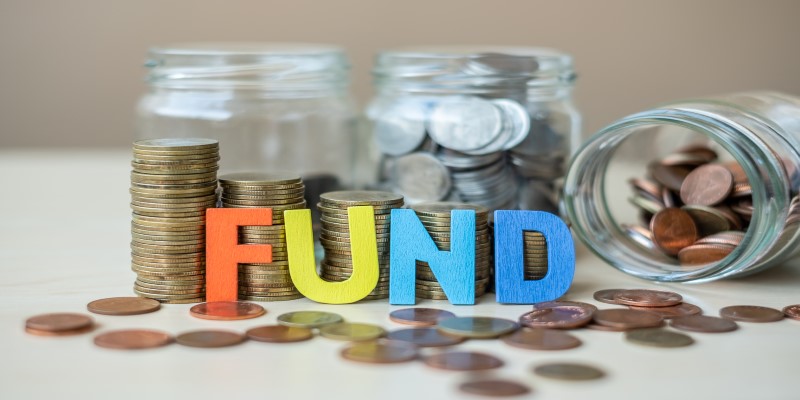
In the intricate tapestry of economic phenomena, stagflation stands out as a perplexing and challenging conundrum. As individuals and businesses strive to adapt to the ever-changing economic landscape, the emergence of stagflation poses unique challenges that require a nuanced understanding. In this guide, we will delve into the intricacies of stagflation, exploring its causes, consequences, and offering insights into navigating this economic quagmire.
Understanding Stagflation:

Stagflation is a rare economic scenario characterized by a simultaneous occurrence of stagnant economic growth, high unemployment, and rising inflation. Traditionally, economic theory posits a trade-off between inflation and unemployment, known as the Phillips Curve. However, stagflation disrupts this relationship, presenting policymakers with a complex puzzle to solve.
Causes of Stagflation:
- Supply Shock:One of the primary causes of stagflation is a significant supply shock. This can be triggered by disruptions in the supply chain, geopolitical events, or natural disasters that impede the production and distribution of goods and services. Reduced supply coupled with sustained demand can drive prices higher, contributing to inflation.
- Cost-Push Inflation:Stagflation often arises from cost-push inflation, where an increase in production costs, such as higher energy prices or raw material costs, is passed on to consumers. This creates a scenario where businesses face rising costs, leading to reduced profitability and, in turn, potential unemployment.
- Demand-Pull Inflation:On the demand side, excessive government spending or loose monetary policies can drive inflation even as the economy experiences stagnant growth. This combination exacerbates the challenges posed by stagflation, making it a delicate balancing act for policymakers.
Consequences of Stagflation:
- Unemployment Woes:Stagflation hits the labor market hard, as businesses, grappling with rising costs, may cut back on hiring or even lay off workers to maintain profitability. This contributes to a rise in unemployment rates, amplifying the economic challenges faced by individuals and families.
- Eroding Purchasing Power:Inflation erodes the purchasing power of individuals and businesses, making it more challenging for them to maintain their standard of living or sustain profitable operations. The erosion of purchasing power can have cascading effects on consumption patterns and investment decisions.
Navigating the Stagflation Quagmire:
- Targeted Policy Measures:Policymakers need to adopt a balanced and targeted approach to address the dual challenges of stagnant growth and inflation. Tailoring fiscal and monetary policies to address the specific causes of stagflation is essential for an effective response.
- Investment Diversification:Businesses and individuals should consider diversifying their investments to mitigate the impact of stagflation. Allocating resources to assets that historically perform well during inflationary periods, such as commodities or inflation-protected securities, can provide a hedge against economic uncertainties.
- Adaptability and Innovation:Stagflation demands adaptability and innovation from businesses. Companies that can innovate in response to supply chain disruptions, implement cost-effective measures, and maintain operational flexibility are better positioned to weather the challenges posed by stagflation.
How can you prepare for a recession or stagflation?
There are a few steps you can take to prepare yourself for a recession or stagflation:
Create an emergency fund
It's always important to have some savings set aside for unexpected expenses, but it becomes even more crucial during times of economic downturn. Aim to have at least 3-6 months' worth of expenses saved up in case of job loss or other financial emergencies.
Minimize debt
During a recession, interest rates tend to increase which can make it harder to pay off debt. Try to pay off as much debt as possible before a recession hits, and avoid taking on any new debt.
Develop new skills
During a recession, it may be harder to find employment in certain industries. To increase your chances of finding a job, consider developing new skills or furthering your education in a field that is more resilient to economic downturns.
Network and maintain connections
In times of economic uncertainty, having a strong network can be incredibly valuable. Stay connected with colleagues, attend networking events, and keep your LinkedIn profile up to date.
Examples of successful strategies during past recessions
- Investing in low-risk assets such as government bonds or gold
- Starting a side hustle to supplement income
- Refinancing debt to take advantage of lower interest rates
It's important to note that no strategy is foolproof and it's always wise to consult with a financial advisor before making any major decisions.
Strengthening Global Cooperation:

Given the interconnectedness of today's global economy, addressing stagflation requires international cooperation. Collaborative efforts among nations can help mitigate the impact of supply shocks and foster a more stable economic environment. Coordinated policies, such as the harmonization of trade practices and the establishment of contingency plans for global disruptions, can contribute to a more resilient economic system.
The Importance of International Collaboration in Mitigating Stagflation:
Effective international collaboration plays a vital role in mitigating the impact of stagflation. With the interconnectedness of today's global economy, economic shocks in one country can swiftly spread to others, intensifying the challenges posed by stagflation. By fostering cooperation among nations, valuable resources and expertise can be pooled to address supply chain disruptions and other external factors that contribute to stagflation.
Harnessing Global Trade to Counteract Economic Stagnation:
Global trade plays a crucial role in mitigating the impact of stagflation. By advocating for equitable and unrestricted trade practices, nations can foster economic diversification and lessen the consequences of supply shocks. International trade facilitates access to vital resources, which might be scarce domestically, thereby stabilizing prices and bolstering economic growth.
The Role of Multilateral Institutions in Stagflation Response:
Multilateral institutions, such as the International Monetary Fund and the World Bank, can play a vital role in responding to stagflation. These organizations have the resources and expertise to provide assistance and guidance to nations facing stagflation, promoting coordinated response efforts. By facilitating financial support and promoting policy coordination among member countries, multilateral institutions can contribute to a more effective response to stagflation.
Conclusion
In the realm of economic uncertainties, stagflation poses a formidable challenge that necessitates a comprehensive understanding and strategic responses. Successfully navigating this economic quagmire requires a collaborative effort from policymakers, businesses, and individuals alike. By comprehending the underlying causes, anticipating the consequences, and adopting targeted strategies, we can collectively strive to overcome the complexities of stagflation and pave the way for sustainable economic growth.



